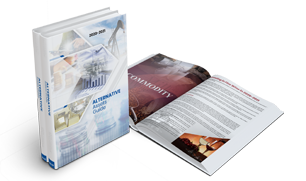
Never miss an important update |
Click to get notified about important updates only. |

99 Alternatives
Opportunities are Infinite
CRAR or CAR (Capital adequacy ratio) is used to assess the ability of a bank to absorb losses.
The banks view the minimum capital ratios as acceptable standards to ensure the condition is fundamentally sound.
Maturing assets and liabilities are classified based on the residual maturity (i.e. the remaining period) and not on their contractual maturity, under various time frames also termed as time buckets (1 day; 2-7 days;
8-14 days; 15-28 days; 29 days-3 months; 3-6 months; 6 months-1 Year; 1-3 Years; 3-5 Years; 5 Years & above).
Another bucket is known as ‘non-sensitive’ wherein all assets and liabilities not sensitive to interest rates are classified, e.g. Cash, CA balance with other banks, FA, Capital, R&S, etc.
Assets of the bank are in the form of:
Loans & advances
Long-term investment vehicles
Balances with the Central Bank,
Balances with other Banks
Cash
Fixed assets
Other assets, etc
Liabilities of the bank are in the form of:
Deposits
Borrowings
Other liabilities and provisions
Capital reserve and surplus etc.
Minimum Capital Requirement - Maintenance of capital concerning the risk-weighted assets.
CAR= Tier 1 Capital + Tier 2 Capital /(divided by) Risk-Weighted Assets
Common Equity Tier I Capital ratio = Common Equity Tier I Capital / RWA for (Credit risk + Market risk + Operational risk)
Tier I Capital ratio = Tier I Capital / RWA for (Credit risk + Market risk + Operational risk)
Total Capital ratio = Eligible total Capital / RWA for (Credit risk + Market risk + Operational risk)
Components of Common Equity Tier 1 Capital:
Paid-up equity capital
Stock surplus (share premium) resulting from the issue of common shares.
Statutory reserves
Capital reserves representing surplus arising out of sale proceeds of assets
Other disclosed free reserves
Balance in P&L A/c at the end of the previous FY
Current Year Profit on a Quarterly basis provided incremental NPA provision at the end of any 4 quarters of the previous FY.
Components of Additional Tier I Capital
Perpetual Non-cumulative Preference Shares (PNCPS)
Stock Surplus (share premium) resulting from the issue of instruments included in Additional Tier 1 capital
Debt Capital instruments eligible for inclusion in Additional Tier 1 capital
Any other type of financial investment instrument is generally notified by the central banks occasionally.
Components of Tier II Capital
General Provisions and Loss Reserves up to a maximum of the pre-defined risk-weighted assets-standardized approach by the central banks.
Debt Capital Instruments issued by the banks
Preference Share Capital Instruments [(i) Redeemable cumulative preference shares - RCPS (ii) Redeemable non-cumulative preference shares - RNCPS (iii) Perpetual cumulative preference shares – PCPS]
Stock surplus (share premium) resulting from the issue of instruments included in Tier 2 capital.
Risk-Weighted Assets:
FB (On-Balance sheet) items: Assets such as cash, loans, investments, and other assets, to which the degree of risk is expressed as %age weights.
NFB (Off-Balance Sheet) items are first multiplied by the credit conversion factor and then again multiplied by the relevant risk weightage to calculate the risk value.
Basel-recognized securities which are considered for risk mitigation are:
Cash Margin,
Bank Deposit,
Gold and commodities,
NSC & KVP (Face Value),
Insurance Policies (Surrender Value),&
Government securities (Face Value).
Real estate remains one of the most time-tested...
From liquifying your asset to any time you want to have...
Impact investing in real estate is a growing trend with...
Whether buying your first home or selling your...
What is better Silver or Sterling Silver? We all know...
How much do Twitch Streamers Make? Man is fun-loving...
Copyright © 2025 99alternatives Ltd. All rights reserved.
Designed and Managed by Mont Digital


